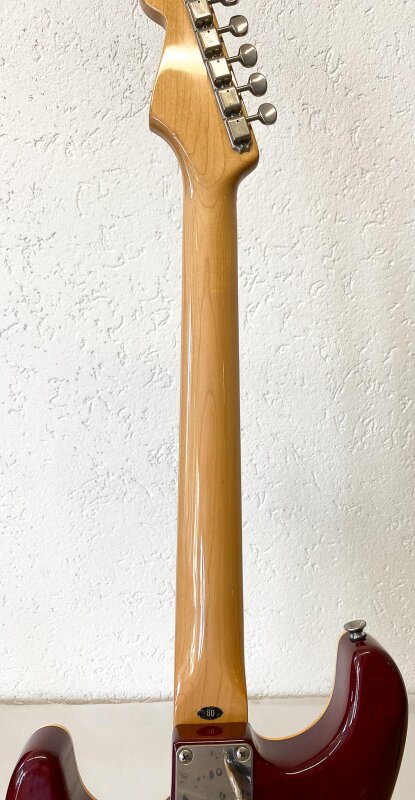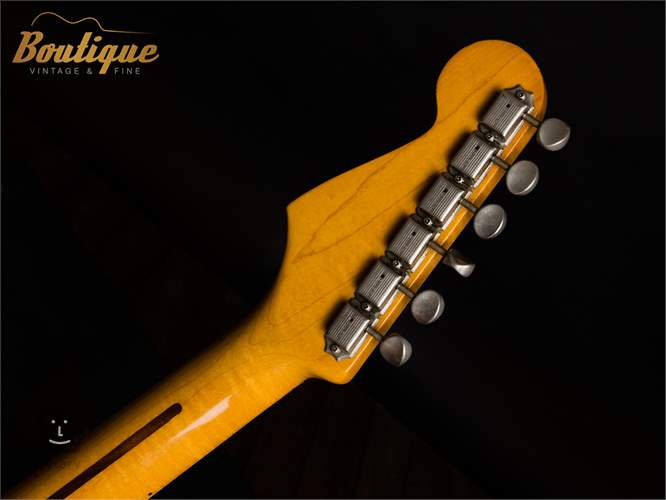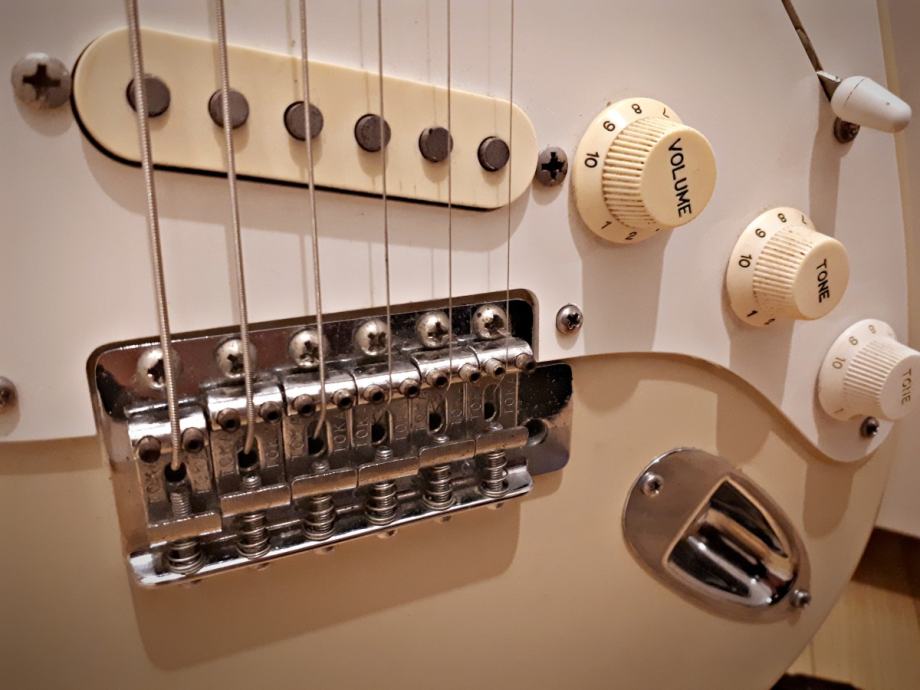

This product line was discontinued in 1985, but the Goldstar line has remained in production through to today – albeit with an altered headstock shape to distinguish it from a genuine Fender. Silverstar Sound and Tokai’s American LineĪlong with the Springy and Goldstar Sound Strats, Tokai had also been producing a replica of the CBS-era Fender Stratocaster since 1978 called the Silverstar Sound.
#TOKAI SPRINGY SOUND SERIAL#
Tokais can also be identified through their serial numbers, but there are some instances of departures from this system.įor more information on Tokai serial numbers, you can refer to this guide. ST-120 (1982): V-shaped neck, gold hardware, Kluson-type tuners, DiMarzio VS-1 alnico pickups, 1-piece ash body with nitro finish.Īll of the above models were available with a rosewood fingerboard, but this feature is very rare on ST-80 and higher models.ST-100 (1979–1983): V-shaped neck, gold hardware, Kluson-type tuners, DiMarzio VS1 alnico pickups, 1- or 2-piece sen ash body with nitro finish.ST-80 (1979–1983): V-shaped neck, nickel or gold hardware, Kluson-type tuners, DiMarzio VS-1 alnico pickups, 2-piece sen ash or alder body with nitro finish.ST-70 (1982–1983): U-shaped neck, nickel hardware, Kluson-type tuners, DiMarzio VS-1 alnico pickups, 2-piece sen ash or alder body with poly finish.ST-60 (1977–1984): V shaped neck, nickel hardware, Kluson-type tuners, alnico “E,” “U,” “V” or “VI” pickups, 2-piece sen ash or alder body with poly finish.ST-50 (1977–1984): U-shaped neck, nickel hardware, Kluson-type tuners, alnico “E,” “U,” “V” or “VI” pickups, 3-piece alder or sen ash body with poly finish.

ST-45 (1980–1981): U-shaped neck, chrome hardware, non-Kluson type tuners, ceramic pickups, 3- or 4-piece alder body with poly finish.ST-42 (1977–1979): U-shaped neck, chrome hardware, non-Kluson type tuners, ceramic pickups, 3- or 4-piece sen ash body with poly finish.

Springy Sound model numbers-which are usually engraved on the last fret or on the neck heel-generally break down as follows: And to further complicate matters, many Tokais have been heavily modified as they’ve changed hands over the years, so there are many examples of guitars with mismatched necks and bodies. Since the model numbers were based on a vague appraisal of the guitar’s expected retail value as opposed to their technical specifications, two Tokais of the same model number may have entirely different features. It’s possible to find a ST-55s, for example. These changes would be reflected in the model number. Tokai would add 5,000 yen (roughly $57 dollars in today's money) to left-handed or custom painted guitars, such as the ones with colored headstocks. The Springy Sound guitars that Tokai built between 19 can be broken down according to their model number, which was a reference to the guitar’s expected retail value.įor example, an ST-42 would have cost 42,000 yen at the time (roughly $480 USD in today's money). The Very First Attempt at a Vintage Reissue

While the popularity of Tokai’s replicas remained strong in the Japanese market, the introduction of Fender’s Japanese-made models (made by FujiGen Gakki from 1982-1997) into America and Europe largely forced Tokai out of these markets by the late 1980s. From 1997 until 2015, Tokai produced Fender " Made In Japan” models, which are also collector instruments today. In fact, the two companies made a deal in 1997: Tokai could continue to produce some of its replicas with subtle changes to their branding and headstock shapes if they would agree to supply Fender with guitars. Stevie Ray Vaughan posed with a Tokai Springy Sound on the cover of his 1983 album Texas Flood, and Billy Gibbons of ZZ Top was spotted with his Tokai Strat replica on the road.Ĭollectors often lump these models together with other Japanese replicas as “lawsuit guitars.” However, Fender never actually sued Tokai. But they started to gain notoriety in the 1970s and ‘80s with their production of high-quality Fender and Gibson replicas that captured the old school vibes of the original instruments at a fraction of the cost.īy the early 1980s, Tokai’s Stratocaster replicas-known as Springy Sound, Goldstar Sound, and Silverstar Sound-were surpassing Fender’s American-made Strats in popularity. Founded in 1947, Tokai Gakki Company, Ltd., or Tokai Guitars, began as an obscure Japanese musical instrument manufacturer.


 0 kommentar(er)
0 kommentar(er)
